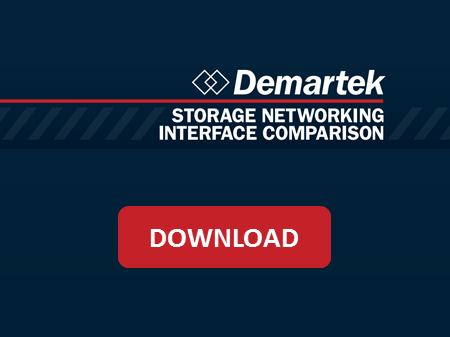HPE, Dell, Cisco 1-2-3 in Q2’2016 Cloud Infrastructure
 According to the International Data Corporation (IDC) Worldwide Quarterly Cloud IT Infrastructure Tracker, vendor revenue from sales of infrastructure products (server, storage, and Ethernet switch) for cloud IT, including public and private cloud, grew by 14.5% year over year to $7.7 billion in the second quarter of 2016 (2Q16), ahead of renewed hyperscale growth expected in the second half of 2016.
According to the International Data Corporation (IDC) Worldwide Quarterly Cloud IT Infrastructure Tracker, vendor revenue from sales of infrastructure products (server, storage, and Ethernet switch) for cloud IT, including public and private cloud, grew by 14.5% year over year to $7.7 billion in the second quarter of 2016 (2Q16), ahead of renewed hyperscale growth expected in the second half of 2016.
The overall share of cloud IT infrastructure sales climbed to 34.9% in 2Q16, up from 30.6% a year ago. Revenue from infrastructure sales to private cloud grew by 14.0% to $3.1 billion, and to public cloud by 14.9% to $4.6 billion. In comparison, revenue in the traditional (non-cloud) IT infrastructure segment decreased 6.1% year over year in the second quarter. Private cloud infrastructure growth was led by Ethernet switch at 49.4% year-over-year growth, followed by storage at 19.7%, and server at 8.9%. Public cloud growth was also led by Ethernet switch at 61.8% year-over-year growth, followed by server at 25.1% while storage revenue for public cloud declined 6.2% year over year. In traditional IT deployments, server declined the most (7.5% year over year) with Ethernet switch and storage declining 2.2% and 2.0%, respectively.
“As expected, the hyperscale slow down continued in the second quarter of 2016,” said Kuba Stolarski, research director for Computing Platforms at IDC. “However, deployments to mid-tier and small cloud service providers showed strong growth, along with private cloud buildouts. In general, the second quarter did not have as difficult a compare to the prior year as the first quarter did, and this helped improve growth results across the board compared to last quarter. In the second half of 2016, IDC expects to see strengthening in public cloud growth as key hyperscalers bring new datacenters online around the globe, continued strength in private cloud deployments, and declines in traditional, non-cloud deployments.”
From a regional perspective, vendor revenue from cloud IT infrastructure sales grew fastest in Latin America at 44.0% year over year in 2Q16, followed by Western Europe at 41.2%, Japan at 35.4%, Canada at 21.8%, Central & Eastern Europe at 21.0%, Middle East & Africa at 16.8%, Asia/Pacific (excluding Japan) at 15.8%, and the United States at 6.7%.
| Top 5 Vendor Groups, Worldwide Cloud IT Infrastructure Vendor Revenue, Q2 2016 (Revenues are in Millions, Excludes double counting of storage and servers) | |||||
| Vendor Group | 2Q16 Revenue (US$M) | 2Q16 Market Share | 2Q15 Revenue (US$M) | 2Q15 Market Share | 2Q16/2Q15 Revenue Growth |
| 1. Hewlett Packard Enterprise | $1,262 | 16.4% | $1,103 | 16.4% | 14.4% |
| 2. Dell | $1,010 | 13.1% | $682 | 10.1% | 48.2% |
| 3. Cisco | $846 | 11.0% | $642 | 9.5% | 31.8% |
| 4. EMC | $543 | 7.0% | $488 | 7.2% | 11.3% |
| 5. Lenovo* | $258 | 3.3% | $203 | 3.0% | 26.6% |
| 5. NetApp* | $251 | 3.3% | $252 | 3.7% | -0.4% |
| 5. IBM* | $229 | 3.0% | $330 | 4.9% | -30.8% |
| 5. Huawei* | $226 | 2.9% | $163 | 2.4% | 38.0% |
| 5. Inspur* | $196 | 2.5% | $130 | 1.9% | 50.4% |
| ODM Direct | $1,519 | 19.7% | $1,690 | 25.1% | -10.1% |
| Others | $1,375 | 17.8% | $1,050 | 15.6% | 30.9% |
| Total | $7,713 | 100% | $6,734 | 100% | 14.5% |
| IDC’s Worldwide Quarterly Cloud IT Infrastructure Tracker, October 2016 | |||||
* Table Note: Lenovo, NetApp, IBM, Huawei, Inspur all ranked number 5 in 2Q16 in a statistical tie. IDC declares a statistical tie in the worldwide cloud IT infrastructure market when there is less than one percent difference in the revenue share of two or more vendors.
Taxonomy Notes:
IDC defines cloud services more formally through a checklist of key attributes that an offering must manifest to end users of the service. Public cloud services are shared among unrelated enterprises and consumers; open to a largely unrestricted universe of potential users; and designed for a market, not a single enterprise. The public cloud market includes variety of services designed to extend or, in some cases, replace IT infrastructure deployed in corporate datacenters. It also includes content services delivered by a group of suppliers IDC calls Value Added Content Providers (VACP). Private cloud services are shared within a single enterprise or an extended enterprise with restrictions on access and level of resource dedication and defined/controlled by the enterprise (and beyond the control available in public cloud offerings); can be onsite or offsite; and can be managed by a third-party or in-house staff. In private cloud that is managed by in-house staff, “vendors (cloud service providers)” are equivalent to the IT departments/shared service departments within enterprises/groups. In this utilization model, where standardized services are jointly used within the enterprise/group, business departments, offices, and employees are the “service users.”
Category: News









